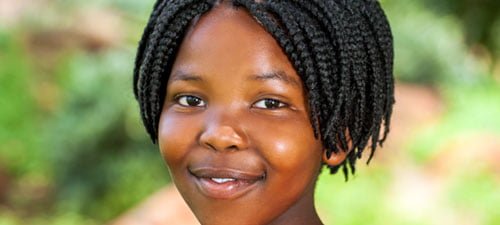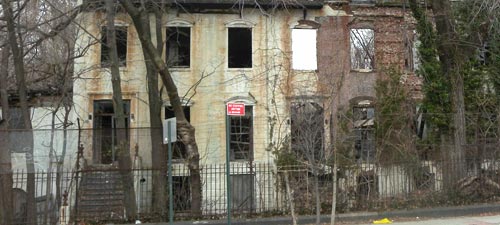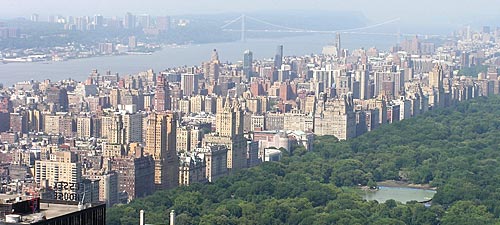To get to Amara’s house, you ride the A train deep into Brooklyn, way past the hip neighborhoods you see on TV. Ride the A train for 45 minutes in the other direction, to Manhattan, and you’ll find Ella – another bright and giggly 12 year-old. Though just a few miles separate them, their lives could not be more different, especially their opportunities for a healthy life and future. Read Amara’s and Ella’s stories below to see that where we live and how we live can profoundly affect health.

Amara and Ella
Population health science uncovers knowledge about how and why the circumstances of people’s lives matter for their health and longevity. Ella’s and Amara’s stories highlight many of the circumstances that population health scientists may study.
MEET AMARA

Walk a few blocks through Amara’s neighborhood and it’s almost as if you’ve left New York City behind. Stray dogs and escaped chickens roam the dusty streets and many of the houses are abandoned; piles of rubble and trash are strewn around in the tall weeds that start where the pavement ends. This place is where Amara was born, and it has been her home for the past 12 years. Unfortunately, the simple fact that this giggly, bright middle schooler lives in this zip code will determine a lot about her health and how her life unfolds.

Babies born in Amara’s neighborhood are more likely than other New Yorkers to receive late or no prenatal care, to be born preterm, to be born to teen mothers—and even to die as infants. And things don’t get easier as they grow older. Amara and her friends are more likely than kids from other neighborhoods to be chronically absent from school; they’re often kept home by health problems such as uncontrolled asthma.
Staying healthy here isn’t easy. There are no grocery stores at all, let alone stores that sell healthy food. And finding safe places to exercise is difficult. The assault rate in this neighborhood is about twice as high as in the rest of the city, which makes many families, including Amara’s, opt to keep their kids inside. Many homes also have black mold and rat and roach infestations, which can have serious health consequences. As a result, compared with other New Yorkers, Amara’s neighbors are more likely to be obese, to have diabetes, and to be hospitalized for alcohol, drugs, stroke, or mental health problems. Not surprisingly, given all these grim statistics, they are about 40% more likely to die prematurely than the average New Yorker.
MEET ELLA

Ella lives in one the wealthiest areas of the city. People come from throughout New York—and the world—to visit the restaurants and shops in Ella’s neighborhood, and the old rail line next to her house that has been converted to a beautiful park is always full of tourists and natives. Here, the health benefits start from birth. Simply by virtue of being born in the right zip code, Ella starts out with a huge health advantage over Amara. In fact, if current trends persist, she will live 6 years longer.

In Ella’s neighborhood, most babies are born into stable families, and few are born preterm. The schools are excellent, and attendance is good. And with abundant supermarkets, safe streets, and green spaces and gyms, it’s easy to be healthy in Ella’s neighborhood; the percentage of adults with obesity and diabetes is less than half the city average.
Statistics are drawn from NYC Environment & Health Data Portal. http://a816-dohbesp.nyc.gov/IndicatorPublic/QuickView.aspx
Adapted from a concept developed by George Kaplan; see Growing Inequality: Bridging Complex Systems, Health Disparities, and Population. George A. Kaplan, Ana V. Diez Roux, Carl P. Simon, Sandro Galea (Eds). 2017, Washington, DC: Westphalia Press. Click here to view.
